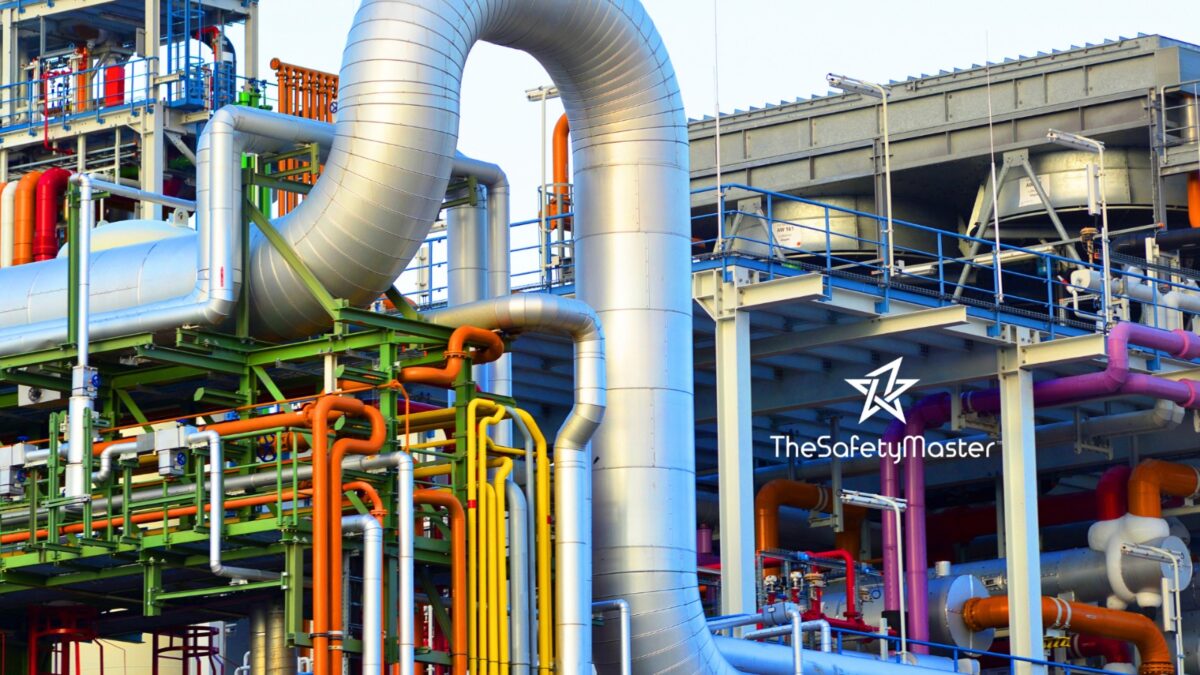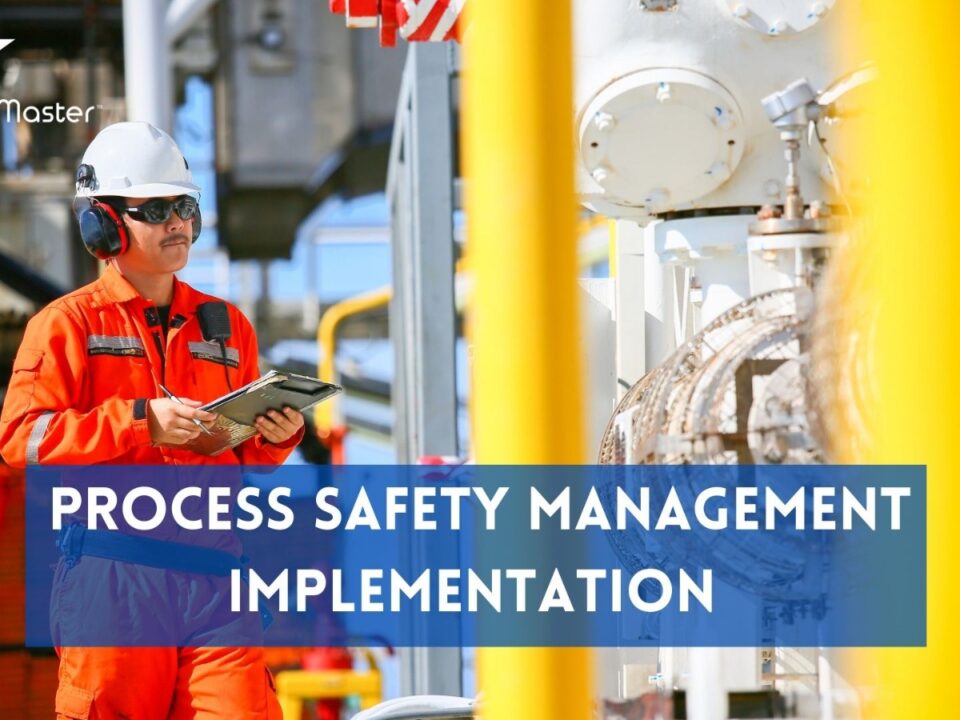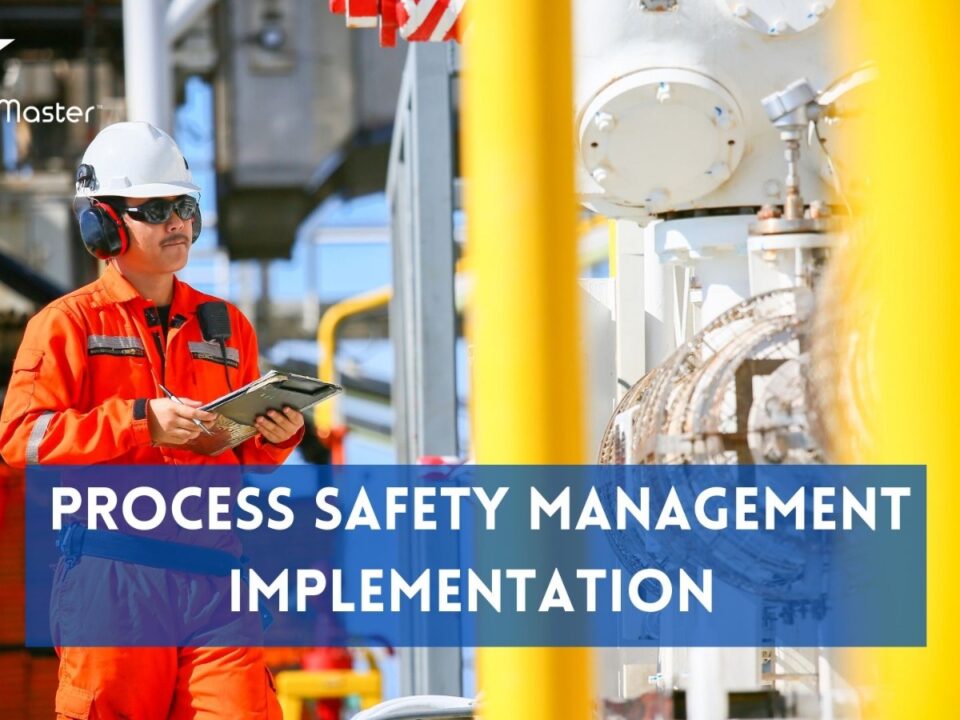Process Safety Management Implementation: Mitigating Risk and Ensuring Business Resilience

The Role of HAZOP Study in Identifying and Managing Operational Hazards in Indian Chemical Manufacturing
November 3, 2023
Crafting a Successful Behavior-Based Safety Implementation Program: Key Considerations and Best Practices
November 6, 2023In this article, we delve into the critical aspects of Process Safety Management (PSM) implementation that organizations simply cannot afford to overlook. With potential risks lurking in every corner of manufacturing facilities, it becomes paramount to adopt a systematic approach to mitigating these hazards. As we unfold the layers of this intricate topic, we will guide you through effective strategies, best practices, and practical insights, empowering you to ensure business resilience and safeguard your operations. Embark on this journey with us, as we promise to equip you with the knowledge and tools needed to navigate the challenges that lie ahead. Get ready to fortify your organization’s safety framework and build a strong foundation for long-term success.
Process Safety Management Implementation: Mitigating Risk and Ensuring Business Resilience
Welcome, esteemed readers, to an engaging discourse on Process Safety Management (PSM) implementation – a critical aspect of modern business operations. In a world where industries are constantly evolving and facing new challenges, ensuring safe and efficient processes is imperative to protect both human lives and organizational assets. This insightful article delves into the intricacies of PSM implementation, exploring its importance, key principles, best practices, and real-life case studies
Understanding Process Safety Management
Process Safety Management (PSM) is a comprehensive approach that aims to prevent incidents, minimize risks, and promote the safe operation of facilities where hazardous materials are present. It encompasses all aspects of managing processes involving highly hazardous chemicals, including design, construction, operation, and maintenance. PSM is driven by the understanding that even small deviations from safe operating procedures can lead to catastrophic consequences. In order to grasp the essence of PSM, one must delve into its fundamental pillars. These include process knowledge, which involves understanding the chemistry and physics behind the process; hazard identification, which entails recognizing potential dangers and their associated risks; risk assessment and analysis, which quantifies these risks in a structured manner; and operational discipline, which emphasizes adherence to established procedures and protocols.
Furthermore, an effective PSM program requires strong organizational commitment at all levels. It demands active involvement from management in providing necessary resources and fostering a safety culture that encourages open communication and continuous improvement. By embracing the principles of PSM with enthusiasm and dedication, organizations not only mitigate risks but also pave the way towards sustainable growth and resilience in an ever-evolving business landscape.
Importance of Process Safety Management Implementation
The Importance of Process Safety Management Implementation: Process Safety Management (PSM) is of paramount importance in industries where the handling and processing of hazardous materials are involved. It serves as a comprehensive framework that helps identify, evaluate, and mitigate potential risks, thereby ensuring the safety and resilience of businesses. By implementing PSM, companies not only comply with regulatory requirements but also safeguard their employees, surrounding communities, and valuable assets.
In today’s fast-paced world, where industrial accidents can have severe consequences for both human life and the environment, integrating PSM practices is vital for long-term success. Effective implementation of PSM minimizes the likelihood of catastrophic incidents such as explosions or toxic releases by systematically addressing potential hazards. This proactive approach ensures that risks are adequately managed throughout the entire lifecycle of a process – from design and construction to operation and maintenance.
Furthermore, embracing PSM goes beyond mere compliance; it fosters a culture of safety within an organization. When employees understand the criticality of process safety measures and actively participate in their implementation, a positive ripple effect is created. Engaged employees become more vigilant in risk identification, adhere to established safety protocols conscientiously, and proactively suggest improvements to further enhance process safety performance. In turn, this creates a sense of collective responsibility towards mitigating risks and fosters an optimistic work environment where everyone feels valued and safe.
Overall, prioritizing the implementation of Process Safety Management not only protects lives but also contributes to business resilience by safeguarding operations against costly incidents. By instilling a strong safety culture within organizations, companies can inspire confidence among stakeholders while reinforcing their commitment to sustainable growth – thus emerging as leaders in their respective industries.
Key Principles of Process Safety Management
Key Principles of Process Safety Management: Ensuring the effective implementation of process safety management requires adherence to a set of fundamental principles. These principles form the bedrock upon which a robust safety culture is built. First and foremost, a proactive approach must be adopted, where potential hazards are identified and mitigated before accidents occur. This involves conducting thorough risk assessments and analysing each step of the operational process.
Simultaneously, communication plays a pivotal role in maintaining process safety. It is essential to establish clear lines of communication across all levels of the organization, enabling vital information to flow seamlessly between workers, supervisors, and management. Effective communication ensures that everyone is aware of potential risks and can actively contribute to their mitigation.
Another crucial principle is accountability. Each individual within the organization must take responsibility for their actions and understand how they contribute to overall process safety performance. Accountability fosters a sense of ownership in every employee, as they recognize that their commitment to safety directly impacts not only their own well-being but also the resilience and success of the entire business.
By adhering to these key principles, organizations can create an environment where safety is ingrained in every aspect of operations. Such dedication paves the way for reduced incidents, improved efficiency, enhanced employee morale, and ultimately long-term business sustainability. Process safety becomes not just a requirement but an opportunity for growth and success.
Identifying Potential Hazards and Risks
Identifying Potential Hazards and Risks: Within the realm of Process Safety Management (PSM) implementation, the crucial step of identifying potential hazards and risks serves as the cornerstone for ensuring a safe and resilient workplace. This entails a comprehensive analysis that encompasses various aspects, such as equipment malfunction, chemical reactions, human error, and external factors. By meticulously examining each phase of the production process, from raw material intake to final product storage and distribution, organizations can uncover potential dangers that could compromise employee safety and business continuity.
This stage involves a meticulous examination of all components involved in the industrial process: machinery, pipelines, storage tanks, chemicals, etc. It also includes studying the interactions between these elements to determine any potential failure points or vulnerabilities. For instance, an aging pipeline might be prone to corrosion or leakage over time; thus necessitating regular inspections and maintenance practices. Moreover, it is essential to consider external factors like extreme weather conditions or natural disasters that could amplify risks within the facility.
By diligently assessing these potential hazards and their corresponding risks, organizations can proactively develop effective mitigation strategies. This proactive approach not only minimizes accidents but also enhances overall operational efficiency by reducing downtime and financial losses associated with unplanned disruptions. Furthermore, it cultivates a culture of safety consciousness among employees who are actively involved in hazard identification processes. Through this collaborative effort focused on risk awareness and prevention—an environment where every individual feels empowered—organizations foster a positive mind-set where everyone is committed to achieving excellence in process safety management.
Conducting Risk Assessments and Analysis
Conducting Risk Assessments and Analysis: Delving into the realm of risk assessments and analysis is akin to embarking on a captivating exploration, where every step reveals hidden insights that illuminate the path towards safety. This crucial phase involves a meticulous examination of processes, systems, and equipment to identify potential hazards that may lurk beneath the surface. By employing various methodologies such as HAZOP (Hazard and Operability Study) or FMEA (Failure Mode and Effects Analysis), organizations can systematically dissect their operations, unravelling vulnerabilities that might otherwise remain concealed.
During risk assessments, the harmonious symphony of expertise melds together as multidisciplinary teams joins forces to scrutinize every aspect comprehensively. Engineers meticulously scrutinize operating procedures, while experienced operators lend invaluable insights into potential pitfalls encountered in day-to-day activities. The data obtained from these assessments forms the bedrock upon which robust risk management strategies are built.
Embracing this process affords organizations an opportunity not only to unearth potential dangers but also to foster a proactive approach towards risk mitigation. It serves as a catalyst for innovation, propelling organizations towards novel engineering solutions and cutting-edge technologies that enhance safety measures. By conducting thorough risk assessments and analysis, businesses can confidently navigate turbulent waters with resilience, protecting their assets while ensuring the well-being of their workforce—a testament to their unwavering commitment towards excellence.
Implementing Control Measures and Safety Procedures
Implementing robust control measures and safety procedures is a critical aspect of process safety management. These measures are designed to minimize the potential for accidents, incidents, and catastrophic events that could have severe consequences for both human lives and business operations. By effectively implementing control measures, organizations can create a safer work environment and ensure the smooth operation of their processes. One key aspect of implementing control measures is the identification of engineering controls. These controls involve modifying equipment, systems, or processes to eliminate or reduce hazards at their source. For example, installing automated shutdown systems can quickly halt operations in case of an emergency, preventing further escalation of hazardous events.
Additionally, administrative controls play a pivotal role in ensuring safety within the workplace. This involves implementing procedures such as work permits, maintenance routines, and operating instructions that outline step-by-step guidelines for safe operations. By establishing clear protocols and guidelines, employees are empowered to carry out their tasks safely and efficiently.
Furthermore, personal protective equipment (PPE) should be supplied and utilized correctly to provide an additional layer of protection against potential hazards. This may include items such as helmets, gloves, goggles, respirators, or specialized clothing designed for specific tasks or exposure risks. Ensuring that employees are trained on how to properly use PPE is crucial to maximize its effectiveness in mitigating risks.
By diligently implementing these control measures and safety procedures across all levels of an organization’s operations, businesses can cultivate a culture where safety becomes ingrained in every action taken. Such a proactive approach not only protects employees but also promotes confidence among stakeholders while bolstering business resilience in the face of unexpected challenges.
Training and Educating Employees on Process Safety
Training and Educating Employees on Process Safety: Proper training and education play a critical role in ensuring the safe implementation of process safety management. By equipping employees with the necessary knowledge and skills, organizations can foster a culture of safety and empower individuals to proactively identify and address potential hazards.
During training sessions, employees are educated on various aspects related to process safety, including the nature of different hazardous materials, operating procedures, emergency response protocols, and the proper use of personal protective equipment (PPE). Engaging and interactive training methods are employed to enhance comprehension and retention. Real-life case studies illustrating incidents caused by inadequate process safety measures serve as powerful catalysts for learning.
Additionally, organizations often conduct drills and simulations to provide hands-on experience in dealing with potential emergencies. This practical approach not only reinforces theoretical knowledge but also boosts confidence in responding effectively during critical situations. Furthermore, continuous training programs ensure that employees stay up-to-date with evolving best practices in process safety management.
Overall, by investing in comprehensive training programs, businesses demonstrate their commitment to employee well-being while creating a workforce that is knowledgeable, skilled, and equipped to uphold stringent process safety standards throughout their operations.
Establishing a Robust Safety Culture
Establishing a Robust Safety Culture: In order to achieve an unwavering commitment to safety, organizations must strive to establish a robust safety culture that permeates every aspect of their operations. This entails nurturing an environment where safety is not merely viewed as a set of rules and regulations, but rather as an innate value deeply ingrained within the collective consciousness of all employees. It requires fostering a sense of personal responsibility and accountability for safety, from the top leadership down to the frontline workers.
Building a solid foundation for a robust safety culture begins with effective communication. Open lines of communication between management and employees create an atmosphere where concerns and ideas can be freely shared without fear of retribution. Encouraging active participation in decision-making processes cultivates a sense of ownership and empowers individuals to become proactive contributors to the overall safety efforts.
Additionally, organizations should invest in comprehensive training programs that not only impart knowledge about safe practices but also foster critical thinking skills necessary for identifying potential hazards and mitigating risks. By encouraging continuous learning, organizations can equip their workforce with the tools needed to adapt to changing circumstances and continuously improve safety performance.
Ultimately, establishing a robust safety culture requires consistent reinforcement through positive recognition and acknowledgment. Celebrating achievements, both big and small, creates an atmosphere where individuals feel valued for their contributions towards maintaining a safe working environment. By doing so, organizations inspire confidence among employees while fostering pride in their collective efforts towards building resilience against unforeseen events or accidents
Monitoring and Auditing Process Safety Performance
Monitoring and Auditing Process Safety Performance: One of the critical aspects of ensuring effective process safety management is monitoring and auditing the performance of safety procedures. Regular monitoring allows organizations to identify any deviations or weaknesses in their processes, enabling them to take timely corrective actions. This proactive approach helps in preventing potential incidents and strengthening overall process safety.
During the monitoring phase, various tools and techniques are employed to gather relevant data on key process parameters, safety indicators, and compliance with established standards. This data is then analysed to assess the performance of safety systems, identify trends, and proactively address any gaps or areas for improvement.
In addition to monitoring, auditing plays a crucial role in evaluating the effectiveness of process safety management implementation. Audits involve comprehensive assessments conducted by internal or external experts who thoroughly examine every aspect of an organization’s process safety practices. These audits help identify strengths, weaknesses, and best practices while providing recommendations for enhancement.
By regularly monitoring and conducting thorough audits of process safety performance, organizations can continuously improve their systems, mitigate risks effectively, and ensure business resilience. It fosters a culture of accountability where all stakeholders are actively engaged in maintaining a safe working environment—one that prioritizes the well-being of employees while maintaining operational success.
Continuous Improvement and Risk Mitigation Strategies
Continuous Improvement and Risk Mitigation Strategies: In the pursuit of process safety excellence, organizations must adopt a mind-set of continuous improvement and embrace proactive risk mitigation strategies. One essential element of continuous improvement is the regular review and updating of safety procedures and protocols. Through rigorous evaluation, organizations can identify areas for enhancement, incorporate new technologies, and implement industry best practices to stay ahead of potential risks.
An optimistic approach to continuous improvement involves fostering a culture that encourages open communication and collaboration among employees. By soliciting feedback from frontline workers, who possess valuable insights into day-to-day operations, organizations can tap into their collective knowledge to identify potential areas of improvement. This inclusive approach not only empowers employees but also enhances their commitment to maintaining a safe working environment.
Moreover, organizations should strive to establish robust monitoring systems that provide real-time data on process safety performance. By leveraging advanced technology solutions such as automated monitoring sensors or data analytics tools, companies can proactively detect deviations from established safety standards. This allows for timely interventions, ensuring that corrective measures are taken promptly to prevent accidents or incidents from occurring.
Ultimately, by embracing continuous improvement and implementing effective risk mitigation strategies, organizations can create a safer work environment while also improving operational efficiency and resilience. The commitment to ongoing enhancement demonstrates an unwavering dedication to protecting personnel, assets, and the communities in which they operate.
Case Studies and Examples of Successful Process Safety Management Implementation
Case Studies and Examples of Successful Process Safety Management Implementation: In the bustling oil refinery sector, one shining example of successful Process Safety Management (PSM) implementation is the Tranquil Energy Corporation. By instilling a strong safety culture and prioritizing employee engagement, they achieved remarkable results. Through regular safety training sessions and mock drills, Tranquil Energy not only reduced incidents by 75% but also witnessed a significant boost in employee morale and productivity. Their commitment to continuous improvement and collaboration with regulatory bodies sets an inspiring benchmark for the industry.
Another noteworthy case study comes from the pharmaceutical giant, Medico Life Pharmaceuticals. With a firm belief that process safety is non-negotiable, they adopted a proactive approach to risk management. By implementing robust hazard identification systems and leveraging advanced technology for real-time monitoring, Medico Life successfully eliminated potential threats before they could manifest into major catastrophes. As a result of their diligent efforts, not only did they achieve zero accidents in their production units but also experienced significant cost savings through efficient resource utilization.
A remarkable example from the chemical industry can be found in the success story of Pure Hem Solutions. Recognizing that process safety is integral to sustainable business growth, Pure hem went above and beyond compliance obligations to create a safety-driven environment. They engaged employees at all levels through regular safety meetings and encouraged proactive reporting of near misses or unsafe conditions. The positive impact was evident as Pure hem recorded a staggering 90% reduction in incidents within just two years, fostering an atmosphere of trust and innovation among employees.
These case studies exemplify that through dedicated implementation of Process Safety Management principles, organizations can not only safeguard against potential disasters but also enhance operational efficiency while fostering employee well-being
Conclusion
In conclusion, the implementation of Process Safety Management is not only vital for mitigating risks and ensuring business resilience, but it is also a testament to an organization’s commitment to safeguarding its employees and the surrounding community. By following the key principles of Process Safety Management, identifying potential hazards, conducting thorough risk assessments, implementing control measures, and fostering a robust safety culture, businesses can significantly reduce the likelihood of accidents and maintain operational integrity. With continuous monitoring, auditing process safety performance, and embracing a mindset of continuous improvement, organizations can constantly evolve their processes to stay ahead of emerging risks. Through a proactive approach and unwavering dedication to safety, businesses can establish themselves as industry leaders in process safety management implementation – safeguarding lives while flourishing in an environment conducive to growth and success.




